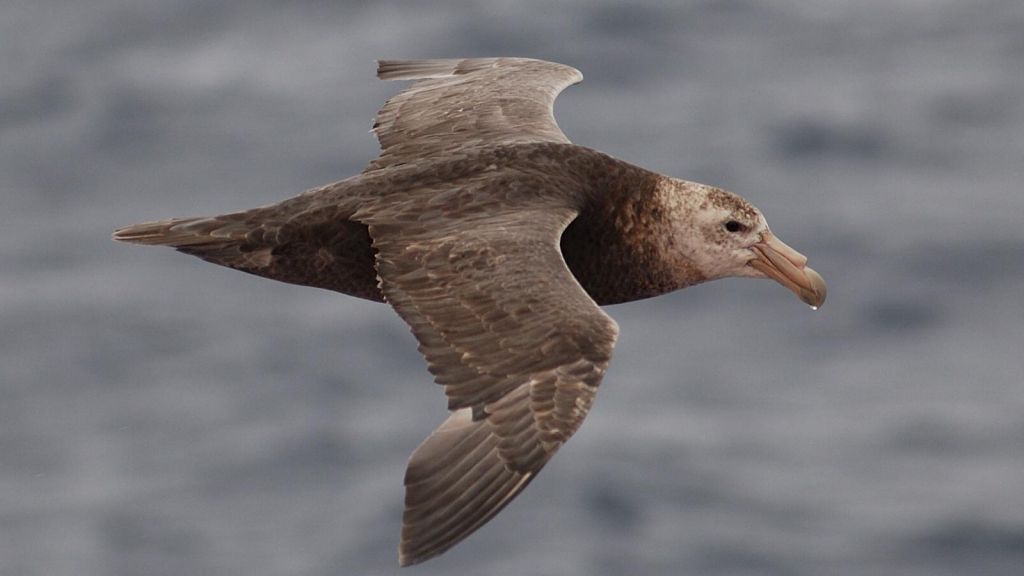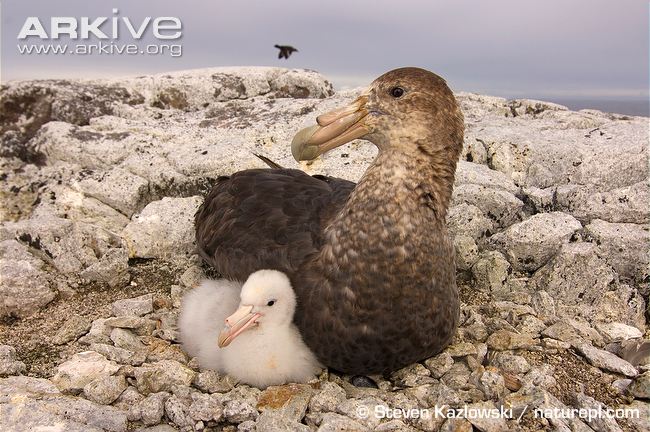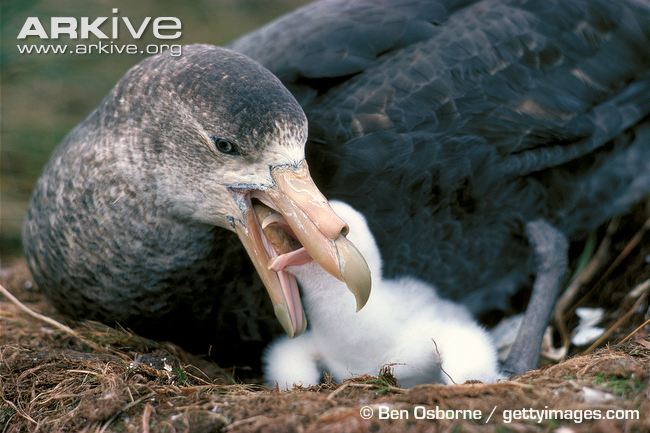
Macronectes giganteus
TAXONOMY
Procellaria gigantea Gmelin, 1789, Staten Island, off Tierra del
Fuego.
OTHER COMMON NAMES
English: Antarctic giant petrel, giant fulmar, stinker, stinkpot;
French: Fulmar gйant; German: Riesensturmvogel; Spanish:
Abanto-marino Antбrtico.
PHYSICAL CHARACTERISTICS
Largest procellariid; 33.9–39 in (86–99 cm); male 11 lb (5 kg),
female 6.6–17.6 lb (3–8 kg); wingspan 72.8–80.7 in (185–205
cm). Enormous yellow bill. Head, neck, and upper breast are
pale; the rest of the body is mottled brown on the dark morph,
with the underside lighter than the upper parts. Dark legs. The
dark color morph resembles the northern giant petrel, but the
less common all-white morph is distinctive.
DISTRIBUTION
Found throughout the Southern Hemisphere from Antarctica
to the subtropics of Chile, Africa, and Australia.
HABITAT
Marine, feeding in coastal and pelagic southern hemisphere
waters. Nests on bare or grassy, exposed ground throughout
Antarctica, on the coasts of Chile and Argentina, and on
subantarctic and Antarctic islands.
BEHAVIOR
The birds are so tame that researchers can walk up to brooding
females and remove chicks from underneath them for study.
Their strong legs, unusual for a procellariid, allow the giant
petrels to scavenge beached carcasses. The larger males exclude
females from carcasses, forcing the females to depend more
heavily on live prey taken at sea. Both sexes visit the colony
year-round, even outside of the breeding season.
FEEDING ECOLOGY AND DIET
Shunned, even by avid birders, for feeding on rotting carcasses.
Parents travel up to 3,000 miles (4,830 km) to ice packs to
feed on krill and squid brought to the surface by ocean upwellings.
Gather in the thousands at long-line fishing boats.
REPRODUCTIVE BIOLOGY
Sexual maturity at six to seven years of age. Breeding season
starts in October. Nest is made by gathering grass and moss, or
small stones, into a mound, with a depression in the middle.
The single white egg is incubated 55–66 days; the whitish chick
is brooded for two or three weeks; fledging at 104–132 days.
CONSERVATION STATUS
Vulnerable. Total population about 36,000 breeding pairs.
Many populations have inexplicably decreased by 30–35%
since 1981.
SIGNIFICANCE TO HUMANS
Their long lives (the oldest known lived 50 years) make them a
valuable indicator species to judge the health of the Antarctic
ecosystem.
Photo Gallery of - Southern giant petrel




 Animalia Life
Animalia Life